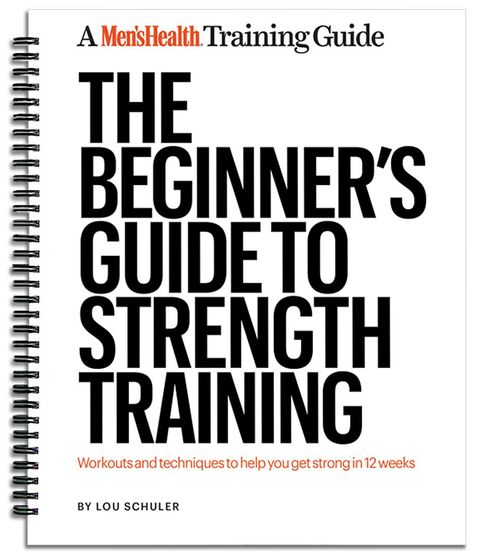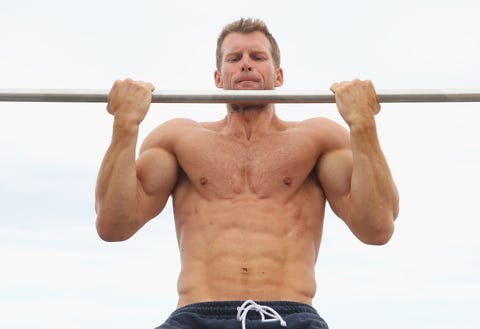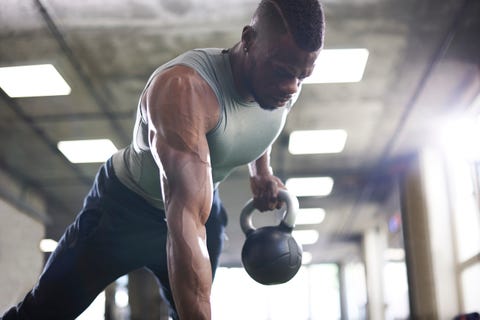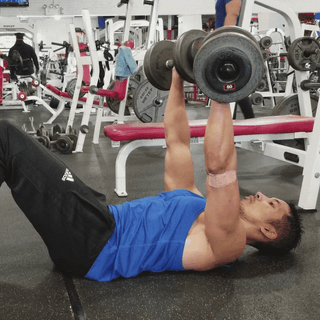https://ehealthweek2010.org/top/buy-generic-cafergot-ca-no-prescription/
If you’re serious about packing on muscle, size, or strength, you know, instinctively, that you have to do more than move. That’s why you’ve likely picked up a set of dumbbells and kettlebells, or grabbed a gym membership: You understand the value of resistance training.
For all the changes to fitness in recent years, one thing remains constant: You have to move against more than air if you want to get your body to grow. And any exercise movement that places you against a resistive force is considered resistance training.
Such training is the key to foundation of modern fitness, and the key to building the body you want. Resistance training works because you’re challenging your muscles and tendons in ways that you couldn’t do with, say, a four-mile walk or light pedaling on a stationary bike. And if you overload your muscles correctly, they generally respond by growing — in size and strength — to face new challenges.
Resistance training is a fundamental piece of your muscle-building journey. Not sure where to start with it? We’ve got you covered in this resistance training primer.
Are weights the only form of resistance training?
No. Essentially, any exercise in which you muscles must a “resistive” force is considered resistance training. When your muscles face a “resistive” force, they must produce greater force than normal in order to create some sort of movement (or, in some cases, to stop movement). That’s resistance training.
Barbells, dumbbells and kettlebells are obvious examples of such resistive forces, but they’re not your only options. Bodyweight resistance training is also common—and can offer considerable challenge. Moves like pushups, squats, and pullups are all examples of bodyweight resistance training, and they’re packed with challenge, too.
There are options beyond bodyweight and barbells, too. Keiser resistance machines, which are driven by pneumatic resistance, are increasingly popular among major sports teams, offering smooth, continuous resistance. Resistance bands are also popular options. Even water can offer resistance, especially if you use tools to magnify its power; Life Time Fitness and Speedo partnered to create a WTRX class that challenges your muscles in the pool.
Other examples of resistance training include sled pushing, row- and ski-ergs (which offer variable resistance) and parachute- or partner-resisted running drills.
What about isometrics?
Isometrics are a somewhat overlooked and forgotten method of resistance training. In most muscle contractions, such as a biceps curl, the target muscle changes length. Your biceps contracts to shorten as you lift the dumbbell, then lengthens as you lower it.
In an isometric, your muscle creates force, but it does not change length — or move at all. Picture yourself pushing against a wall. The wall won’t move, but if you push incredibly hard, you can still create force with your muscles. And the wall does actually present a resistive force, inertia, which can provide challenge. Don’t build your entire strength training program around isometrics, but if you’re dealing with injury, they can offer training benefit; studies have shown that you can gain strength with isometric training (although that strength may not always translate over the full range of motion).

Complete 12 Week Program
$24.99
SHOP NOW
Is resistance training the only way to build muscle?
No. Quick physics lesson: Force = mass times acceleration.
Your goal in training is to challenge your muscles to produce force, because that’s what makes them grow. Facing a resistive force, or a mass that your muscles must accelerate, makes it easier for your muscles to produce force. But your muscles can also produce force with lighter mass (or no mass at all, too).
Sprinters, for example, ask their legs to produce massive amounts of force so that they can accelerate forward at great speeds. And you won’t find a sprinter without wildly muscular legs.

NurPhotoGetty Images
What’s the best kind of resistance training for building muscle?
Weights and bodyweight. Dumbbells and kettlebells let you train the body through a variety of ranges of motion, and in a variety of movements with very little setup. They’re also joint-friendly, so they’re an ideal starting point for any resistance-training program.

Don ArnoldGetty Images
You can also get a lot done with bodyweight, and managing bodyweight is a valuable tool for overall fitness. All the dumbbell curls in the world won’t help your total body strength or total body fitness if you can’t do a pushup or squat or hold a plank for 30 seconds.
How often should you resistance train?
It’s generally assumed that more resistance training is better, so your instinct may be to hit the gym and lift weights 7 days a week. But that’s not always necessary—or the best way. According to Men’s Health Advisor Brad Schoenfeld, Ph.D., C.S.C.S., training frequency is overrated; you can build muscle training three days a week or six.
How many reps and sets should I be doing?
If you’re aiming to build muscle, you’ll want to do 3 or 4 sets of every exercise, and stay in the 8-to-12-rep range, which research has shown is the best range for packing on muscle. This is also a good rep range for fitness beginners, because it gives you a chance to learn each exercise and get consistent with the motions.
Start with light-to-medium weights at first, so you can learn each movement and start learning to contract your muscles correctly. You can go heavier down the road.
What are the best resistance training exercises for muscle-building?
Aim for multi-joint motions, like bench presses, rows, squats, and deadlifts. These moves hit multiple muscles at once, which is how your body works in real life. You can also generally move more weight on these exercises than you can on more single-joint motions like biceps curls and lateral raises.
And facing more resistance will help your body grow in size and strength. Very often, multi-joint motions will also insure that your core, from abs through glutes, is active in the motion as well.
Facing more resistance and challenging multiple muscle groups has one more virtue too: It’ll rev up your metabolism more than single-joint moves, leading to greater calorie burn and fat loss.

Peter MullerGetty Images
Sprinkle in isolation techniques, like concentration curls and triceps extensions, near the end of your workouts.
Your Starter Workout
So what should a resistance training workout look like? Here’s a three-days-a-week all-dumbbells beginner routine that can get you started on the road to major muscle.
Directions: Do this workout three days a week, resting one day in between workouts. Do only as much weight as you can while maintaining good form and staying in the target rep range. On days when you don’t resistance train, aim to stay active in other ways, going for a walk, taking a run, or playing rec sports like basketball and flag football.
Dumbbell Bent-Over Row


Men’s Health
Stand holding dumbbells at your hips, arms hanging naturally, palms facing each other. Tighten your core and hinge forward until your torso is at a 45-degree angle with the ground. Keeping your core tight, squeeze your shoulder blades; this is the start. Now row both dumbbells upwards toward your ribcage; think about pulling your elbows as high as you can as you do this. Pause for a moment, at the top of the motion, then slowly return to the start. That’s 1 rep; do 4 sets of 8 to 12 reps.
Dumbbell Floor Press

Men’s Health
Lie with your back on the floor, holding medium-weight dumbbells directly over your shoulders, arms straight. Bend at the shoulders and elbows, lowering the dumbbells to the ground. Press them back to the start. That’s 1 rep; do 3 sets of 8 to 12 reps.
Goblet Hold Split Squat
Stand holding a medium-weight dumbbell at your chest with both arms. Grip the dumbbell by the bell, keeping your chest up and your core tight. Maintain light tension in your mid-back as you do this. Step back with your left leg about 2 feet; keep your right shin perpendicular to the ground as you do this. This is the start. Now bend both knees, and slowly lower torso until your right thigh is parallel to the ground. Pause, then press back to the start. That’s 1 rep; do 3 sets of 8 to 12 reps per side.
Single-Arm Tall Kneeling Biceps Curl
Kneel on your shins, holding a light-to-medium-weight dumbbell in our right hand. Your upper legs should be perpendicular to the ground; tighten your abs and glutes to keep your torso upright, and work to keep your torso from tilting toward the side of the weight. This is the start. Now curl the right dumbbell upwards, squeezing your biceps at the top. Slowly lower to the start. That’s 1 rep; do 3 sets of 8 to 12 reps for each arm.
Source: Read Full Article
